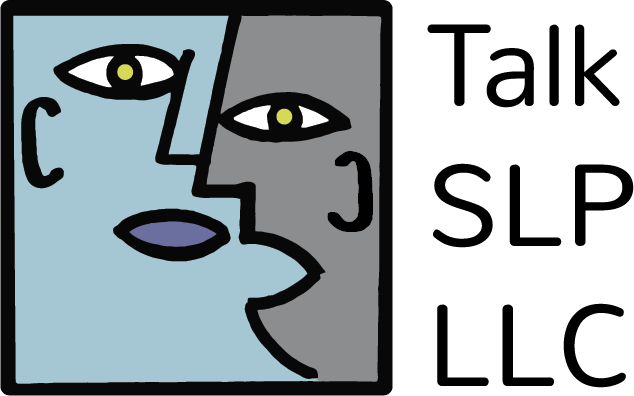Speech-Sound Disorders
Can we talk? Well, that depends on whether you can understand what I am saying.
The term intelligibility refers to clarity of speech or the amount of a speaker's expressions that a listener can easily understand. In normal development, a child’s ability to be understood by those around them steadily increases over time. Children with speech sound disorders are often significantly less intelligible than other children of the same age.
In young children there is often a difference between intelligibility of single words and during conversational speech. Intelligibility with close family members may be more than with unfamiliar listeners. Within families, siblings may sometimes be better than parents in understanding what their younger sibling is saying.
Age and intelligibility by parents:
- By 18 months a child's speech is normally 25% intelligible
- By 24 months a child's speech is normally 50-75% intelligible
- By 36 months a child's speech is normally 75-100% intelligible
(Source: Lynch, Brookshire, and Fox, 1980, p. 102, cited in Bowen, 1998).
Dysarthria (DYS)-Motor Speech Disorder
This condition affects speech due to decreased muscle strength and coordination. Individuals can display low or high tone and poor coordination. A lack of speech clarity results from a neuromuscular impairment that causes the speech mechanisms (larynx, lips, tongue, palate, and jaw) to be paralyzed, weak, or poorly coordinated. There can also be reduced breath and/or voice support for speech. Oral-motor exercises under the care of a speech-language pathologist can be helpful.
Articulation disorders
An articulation disorder results in problems affecting the motor act of creating sounds. These difficulties can make it hard for others to understand you or your child.
Speech errors are common in young children. You will often hear “babytalk,” where a child will substitute sounds (saying “wabbit” rather than “rabbit”) or leave out sounds (saying “nana” rather than “banana”). Such mistakes can seem adorable, but if these errors continue past early childhood, an articulation disorder may be to blame.
Childhood or developmental apraxia of speech (DAS, also called dyspraxia of speech or CAS, Childhood apraxia of speech) is a motor speech disorder affecting speech articulation that occurs in children and is present from birth. This condition is different from a developmental delay in speech in which a child follows typical speech development, only more slowly than normal. Features of Childhood apraxia of speech include inconsistent errors on consonants and vowels in repeated production of syllables or words; lengthened and disrupted coarticulatory transition between sound and syllables; and, inappropriate prosody, especially in the realization of lexical or phrasal stress. DAS/CAS also results in difficulty putting sounds together in the correct order to create words as well as incorrect use of speech rhythms (called prosody). Children with DAS/CAS may also have other speech problems. The cause of this motor speech disorder is not clearly understood, but it appears to have a genetic connection.
Other times, sound substitutions and omissions aren’t true speech errors. They may be related to a dialect or accent. Accent modification is a process of modifying these kinds of acquired phonological behaviors.
Goals of articulation therapy:
- Improve speech sound production by learning about and developing the physiological movements needed to create the various speech sounds.
- Achieve maximum speech clarity by addressing lisps and other sound distortions.
The TALK difference
“My son has been in and out of speech therapy since he was 4 years old. At 10 years old, he was still struggling with the ‘r’ sound and none of the previous speech therapists have been able to make any progress with this. He has been seeing Laura for only a couple months and his speech has improved immensely. We are more than thrilled with the progress he has made. Laura has really made a difference!”
Phonological disorders
Phonological disorders are a matter of brainwork and involve patterns of errors in producing word sounds. For example, some word sounds are produced in the back of the mouth (k and g), while others are formed in the front of the mouth (t and d). Saying “tup” instead of “cup” or “det” instead of “get” are examples of phonological errors.
Researchers have described phonological development as a group of three facets (Ingram, 1989): the way the sound is stored in the child's mind, the way the sound is actually said by the child, and the phonological rules or phonological process. Difficulties in this area can have an impact on a child’s ability to be understood.
Goals of phonological therapy:
- Learn about and be able to create speech sounds needed for clear speech, reading, and spelling.
- Increase speech clarity related to paralyzed, weak, or poorly coordinated speech-related muscles and organs.
- Increase the ability to recognize and manipulate the sounds and syllables used to compose words and gain metalinguistic skills for the ability to think about and talk about language.
Help is available!
Laura Smith, licensed speech-language pathologist and certified orofacial myologist, is specially trained to assist children and adults in overcoming their communication challenges. Her holistic approach takes into account the person as well as the problem.
Telepractice appointments are available, where clients can receive consultation and therapy services using online tools. In-person appointments upon request.
Contact us for more information or to make an appointment.
